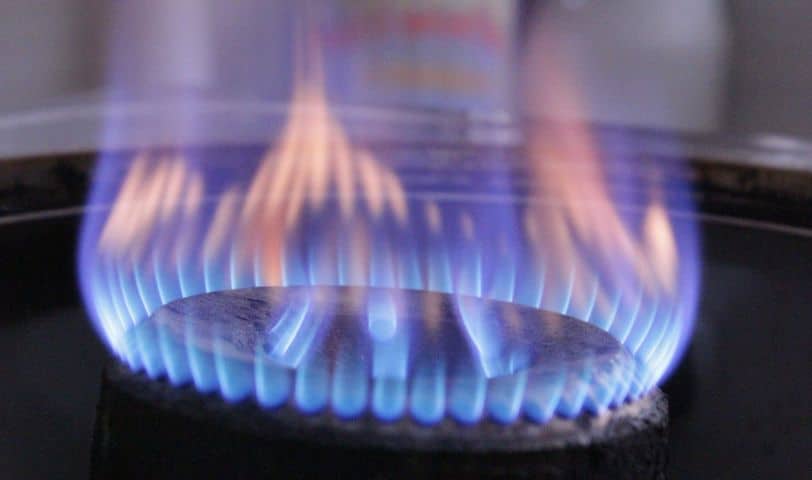LPG and Natural Gas are chemically different gases. Natural gas is methane gas whilst LPG (liquefied petroleum gas) is propane or butane, usually sold as bottled gas. LPG and natural gas have different energy content and gas/air mixes for combustion and working pressure. Whereas LPG is sold in gas bottles (cylinders), natural gas is conveyed by pipeline. LPG has more than double the energy content of natural gas, making it more efficient and cheaper in many cases.
LPG vs Natural Gas – Key Differences
LPG has a higher calorific value or energy content, so less gas is required to produce the same amount of heat. Another key difference is in the oxygen-to-gas ratio required for proper combustion. LPG requires an oxygen-to-gas ratio of approximately 25 to 1. Natural gas requires a ratio of around 10 to 1.
- LPG is propane and butane while natural gas is methane
- LPG is heavier than air while natural gas is lighter than air
- LPG is liquefied through pressurisation.
- Natural gas is cryogenically turned into liquefied natural gas – LNG
- LPG is distributed in gas bottles, cylinders, and tanks
- Natural gas is conveyed via pipeline
- LPG appliances operate at 2.75 kPa
- Liquified LPG turns from liquid to gas at a relatively low temperature
- Natural gas appliances operate at 1.1 kPa
LPG is not natural gas but is derived from natural gas processing and has higher energy content. It is portable and available everywhere. although there are major differences between the two, LPG and Natural Gas are used for thousands of applications in homes and businesses.
LPG – LNG – CNG – What is the difference?
LNG (Liquefied Natural Gas) is natural gas (methane) in cryogenic storage. LPG (Liquefied Petroleum Gas) is mainly propane and butane alone or in mixtures in liquid form under pressure. Liquid natural gas LNG fuel is produced from crude oil refining and natural gas processing. CNG (Compressed Natural Gas) is natural gas stored at high pressure.
Natural gas (methane) is lighter than air under normal atmospheric pressure and will typically disperse in the event of a leak. This is advantageous from a safety point of view. LPG is stored, shipped, and distributed in cylinders or tanks.
While CNG and propane (LPG) come in gas bottles, propane gas bottles are much lighter compared to natural gas bottles. They are also different gases, as CNG is methane. CNG and propane have different chemical formulas: methane is CH4 and propane is C3H8.
Is LPG more expensive than natural gas?
In some situations, LPG can be cheaper than natural gas for the end users. For starters, there are daily natural gas supply charges for being connected to the main gas network. Costs can exceed $400 per year, even before any gas is used. LPG has a higher energy content and the relative positions of natural gas vs LPG change over time, with LPG now a cost-effective alternative to natural gas in many cases.
The cost of using either natural gas or LPG will also depend on where you are located and how much gas you use. LPG contains more heat energy and burns slightly hotter than natural gas. LPG is a great option as an alternative fuel during the transition to renewable energy sources.
What are natural gas liquids (NGLs)?
Natural Gas Liquids (NGLs) are heavier gaseous hydrocarbons that are included in the raw liquified natural gas stream from the wellhead. Hydrocarbon gases include propane, butane, isobutane, ethane, ethene, propene, isobutene, butadiene, pentane, and pentene and pentanes plus. Pentanes Plus is a mixture of liquid hydrocarbons, mostly pentanes, and heavier elements. Natural gasoline is the largest component of pentanes plus.
Raw natural gas also contains impurities including water vapour, hydrogen sulphide (H2S), carbon dioxide, helium, nitrogen, and other compounds that must be removed. Propane, butane, and isobutane are the three gases that are typically sold as LPG.
LPG (Propane)
LPG (Propane) is the gas that is supplied to virtually all homes and most businesses that purchase LPG in Australia. LPG is supplied in 45kg gas cylinders that are either exchanged or refilled on-site by LPG tankers. LPG is also delivered in larger 90kg and 210kg cylinders for homes and businesses, and smaller 9kg and 4kg SWAP’n’GO LPG cylinders that are available from distributors around the country.
LPG (Butane)
Butane LPG fuel is supplied to certain businesses where butane has specific advantages over propane (LPG). These include greenhouse applications and use as a propellant in aerosols.
Autogas (Propane/Butane mix)
Autogas sold at petrol stations can be either propane or a propane/butane mix. Autogas is an economical and clean burning liquified petroleum gas fuel that can extend your vehicle’s engine life while also reducing greenhouse gas emissions.
How do we get natural gas?
Natural gas is a fossil fuel found deep underground in various rock formations. The ‘wet’ gas must be processed to separate out the natural gas by-product liquids, like LPG, as well as water and other impurities. The dry gas is passed through the gas pipelines that deliver it to our homes and businesses.
What is LPG?
LPG is the acronym for Liquefied Petroleum Gas. LPG is used for heating our homes, hot water, cooking, powering our BBQs, and fueling our cars, along with powering many business and agricultural enterprises.
How does LPG work?
LPG is stored under pressure in a liquid state in a gas bottle. It turns back into gas vapour when you release some of the pressure in the gas bottle by turning on your appliance.
What is LPG made of?
The gases that fall under the LPG label include propane, butane, and isobutane, as well as mixtures of these gases. The two most common are propane and butane and the percentage of propane and butane in LPG varies.
Considering swapping to LPG for home or LPG for business? Contact Elgas online or over the phone for more information and a quote regarding your specific requirements.
